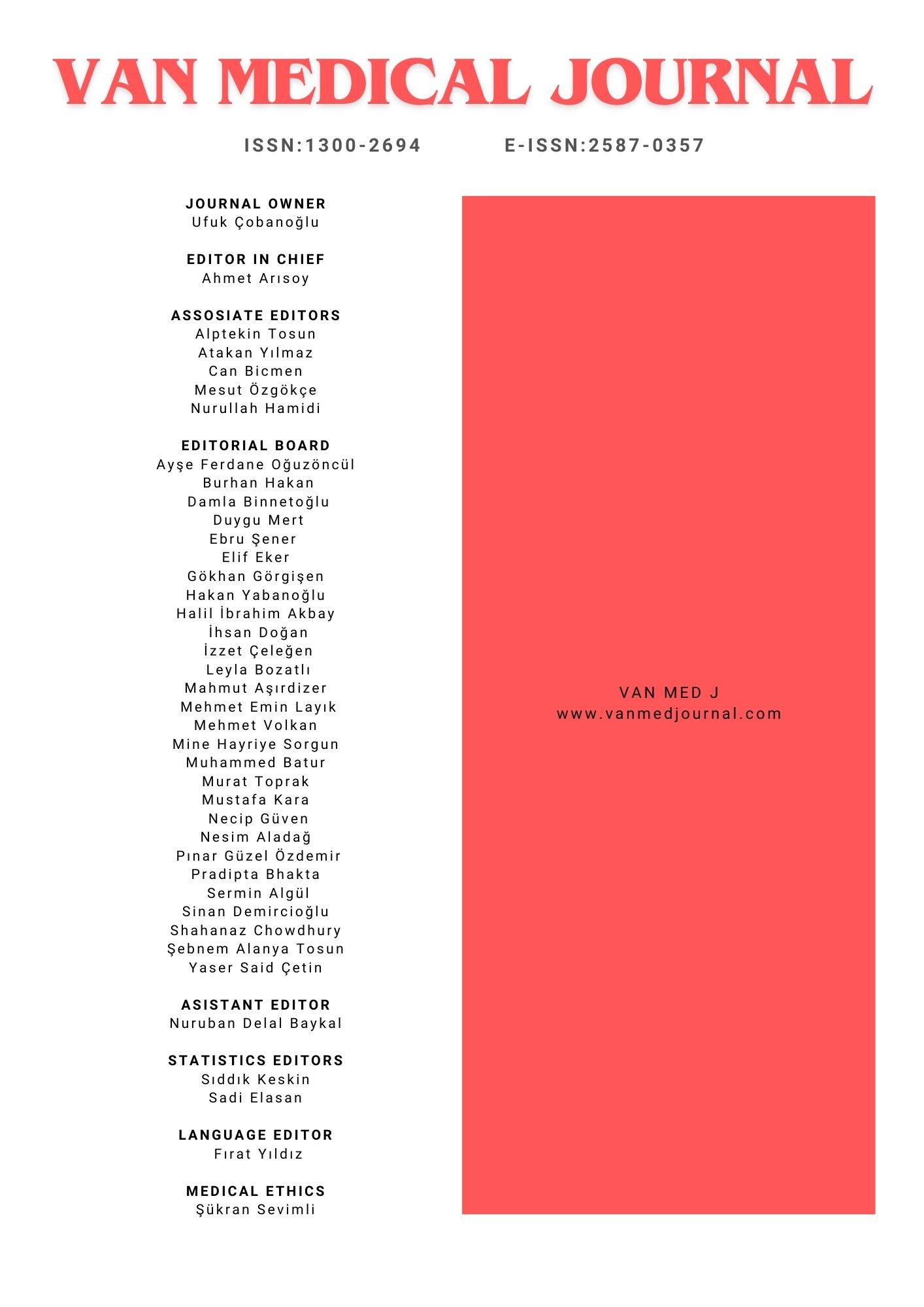Our First Experiences in Micro-Percutaneous Nephrolithotripsy
Muhammet Serdar Buğday1, Cem İpek2, Eyüp Veli Küçük31Van Eğitim ve Araştırma Hastanesi, Üroloji Kliniği, Van, Türkiye2Patnos Devlet Hastanesi, Üroloji Uzmanı, Ağrı, Türkiye
3Ümraniye Eğitim ve Araştırma Hastanesi, Üroloji Kliniği, İstanbul, Türkiye
Objective: The objective is to share our first experiences with the recently applied micropercutaneous nephrolithotripsy method (micro PNL) in the kidney stone treatment. Material- method: Between the dates July 2008 and january 2012 11 patients were incised with 4.85 fr ‘all seeing needle’ accompanied by scopy under direct monitoring. After the incision the inside part of the needle was removed and 3 way connector apparatus was attached to the proximal end of the needle. One of the lateral channels was for the telescope and the other channel was for the usage of the central channel laser fiber in the irrigation process. Peroperative and postoperative parameters of the micro PNL patients were analyzed prospectively. Results: The average age of the patients was37.36, the average body mass index (BMI) was 26.09, the average stone size was 1.9 cm. The average scopy time was 2 minutes, the average operation time was 92.27 minutes. The average VAS score was calculated as 3.6. The average length of hospitalization was 1 day. One patient, who was experiencing renal colic, had a DUSG and multiple stones were detected in the distal ureter. The patient was treated with endoscopic ureteral stone treatment and Double-J stent. Three operations were finished with the standard percutaneous nephrolithotripsy method due to the realization of the excessive stone weigths and the prediction of post operational problems. None of the patients experienced organ damage, developed complications which require open surgical operation or treated with transfusion. Conclusion: To conclude, micro PNL is a reliable and efficient method in the treatment of not-very large kidney stones in the clinics experienced in standard percutaneous nephrolithotripsy. Lots of studies are needed on the subject due to the fact that it’s a new method.
Keywords: Percutaneous nephrolithotripsy, Kidney stone, All-seeing needleİlk Micro-Perkütan Nefrolitotripsi Deneyimlerimiz
Muhammet Serdar Buğday1, Cem İpek2, Eyüp Veli Küçük31Van Eğitim ve Araştırma Hastanesi, Üroloji Kliniği, Van, Türkiye2Patnos Devlet Hastanesi, Üroloji Uzmanı, Ağrı
3Ümraniye Eğitim ve Araştırma Hastanesi, Üroloji Kliniği, Ümraniye, İstanbul
Amaç: Böbrek taşı tedavisinde yeni uygulanan bir yöntem olan mikroperkütan nefrolitotripsi (mikro PNL) yöntemindeki ilk deneyimlerimiz paylaşılmıştır. Gereç ve Yöntem: Ocak 2012-Haziran 2012 tarihleri arasında 11 hastaya skopi eşliğinde, 4.85 Fr ‘all-seeing needle’ ile direkt görüş altında giriş yapıldı. Giriş yapıldıktan sonra içi çıkarılan iğnenin proksimal ucuna 3 yollu konnektör aparat bağlandı. Lateral kanallardan biri teleskop, diğeri irrigasyon için kullanılırken merkez kanal lazer fiber için kullanıldı. Mikro PNL uygulanan hastaların peroperatif ve postoperatif parametreleri prospektif olarak analiz edildi. Bulgular: Hastaların ortalama yaşları 37.36, beden kitle indeksleri (BKI) 26.09, ortalama taş büyüklüğü 1.9 cm idi. Ortalama skopi süresi 2 dk, ortalama operasyon süresi 92.27 dk, hasta VAS skoru 3.6 olarak hesaplandı. Hastanede kalış süreleri ortalama 1 gündü. Bir hastaya operasyon sonrası renal kolik olması nedeniyle çekilen direkt üriner sistem grafisinde (DÜSG) distal üreterde multipl taşları olması üzerine endoskopik üreter taşı tedavisi uygulanıp Double-J stent iletildi. Üç hastanın operasyonu, operasyon esnasında taş yüklerinin fazla olmasının fark edilmesi ve postoperatif sıkıntı yaşayabileceklerinin öngörülmesi üzerine standart perkutan nefrolitotripsi yöntemine geçilerek tamamlandı. Hastaların hiçbirinde organ yaralanması ve açık cerrahi girişim gerektirecek komplikasyon gelişmedi ve hiçbir hastaya transfüzyon uygulanmadı. Sonuç: Sonuç olarak standart perkütan nefrolitotripsi deneyimi olan kliniklerde çok büyük olmayan böbrek taşlarının tedavisinde mikro PNL güvenilir ve etkili bir yöntemdir. Yeni bir yöntem olması nedeniyle daha geniş serilere ihtiyaç vardır.
Anahtar Kelimeler: Perkütan nefrolitotripsi, Böbrek taşı, All-seeing needleManuscript Language: Turkish

